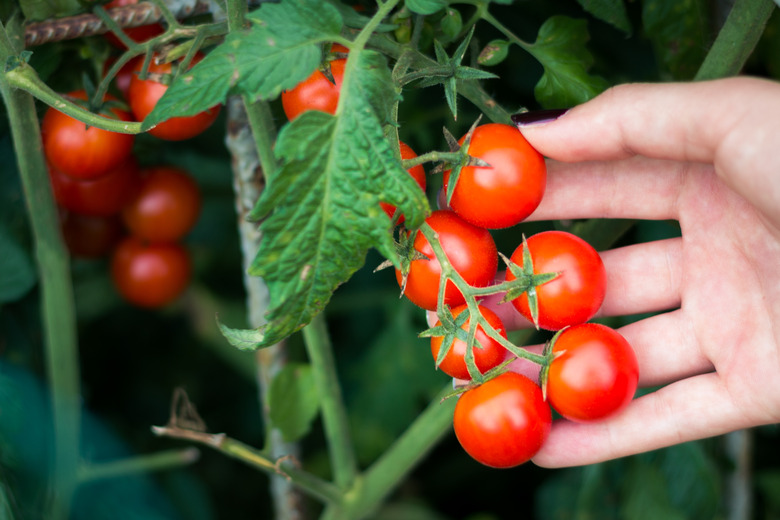How Can I Tell If I Am Overwatering Or Underwatering My Tomato Plants?
We may receive a commission on purchases made from links.
Whenever plants seem to be suffering, the tendency is to water them. Sometimes, a tomato plant (Lycopersicon esculentum, USDA zones 10-11) that is suffering does need water, but it's best to follow good watering techniques to make sure that you are not overwatering or underwatering your tomato plants.
Tip
Tomato plants need oxygen as well as water, so in waterlogged soil, root damage can occur, and the leaves may wilt and turn yellow. Shallow watering only gets to roots near the soil surface, which can cause deeper roots to dry out. Too little water can also cause the leaves to wilt and dry out.
Too Much Water
Too Much Water
Tomato plants need to have a steady supply of water in order to provide you with a steady supply of tomatoes during the growing season. Too much water or not enough water can both cause problems for your tomato plant.
There are a couple of different ways that tomato plants suffer from overwatering. One is that the soil is too compacted, and the surface roots can't dry, while deeper roots don't get enough water. This will cause stunted plant growth and yellow, wilted leaves. To prevent this, when you plant the tomato seedling, loosen and aerate the soil enough that it gives your tomato plant space to grow deep roots and absorb water.
The other way your tomato plant suffers from overwatering is if you're watering it too often. Frequently giving your tomato plants a shallow watering will cause roots to develop near the surface of the soil instead of penetrating the soil more deeply. Instead, water for a longer period but less often. About 1 to 2 inches a week is a good rule of thumb.
Not Enough Water
Not Enough Water
Water your tomato plant enough but not too much. A little leaf wilt on a hot summer afternoon is normal for tomato plants. If your plants are wilted in the morning, however, that's when you need to water.
Just like with too much water, if your tomato plant is underwatered, the leaves will wilt and turn yellow when the plant needs water. Also, if you're growing tomato plants in containers, be aware that they need more water. Water the container until water drips from the bottom. Once the soil is dry an inch below the surface, water again.
You may need to water your in-ground tomato plants every two to three days when summer is at its hottest and driest. Water the roots because watering the foliage can cause the plant to be more susceptible to disease and pests. Once the weather gets cooler and there's plenty of fruit, water once a week.
Tomato Watering Tips
Tomato Watering Tips
Watering slowly and deeply is recommended when watering tomato plants. Using drip irrigation to the soil is one way to ensure you do this right. That will help your tomato plants grow the deep roots they need.
Water early in the day to give your plant leaves time to dry out and to avoid the problems caused by too much wet foliage. Also, if you water at midday, some of the water could evaporate before it can reach the roots.
In dry periods, water tomato plants every four to five days if you have light, sandy soil and every seven to 10 days if you have heavy, clay soil. Add mulch to your tomato plants after they're established to protect the soil and the roots.
